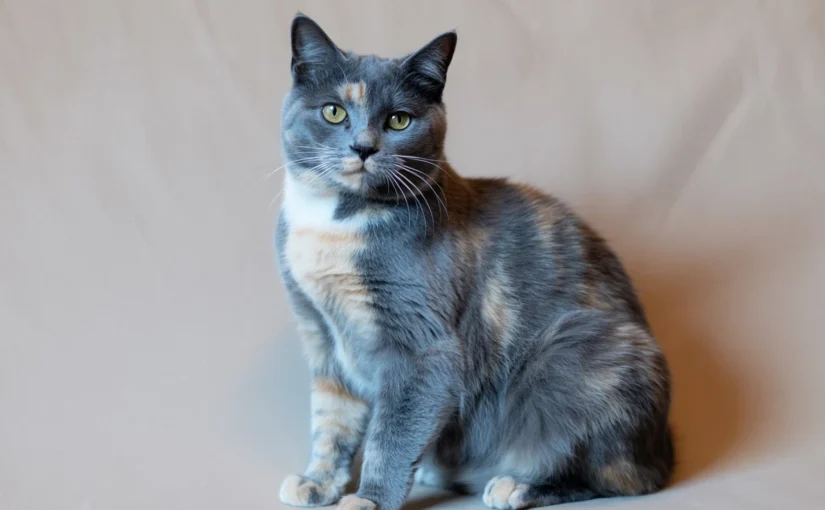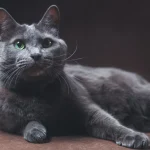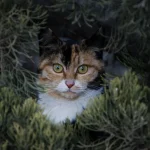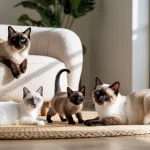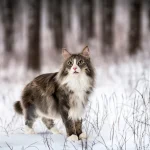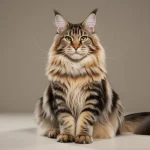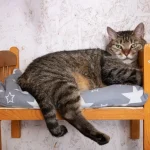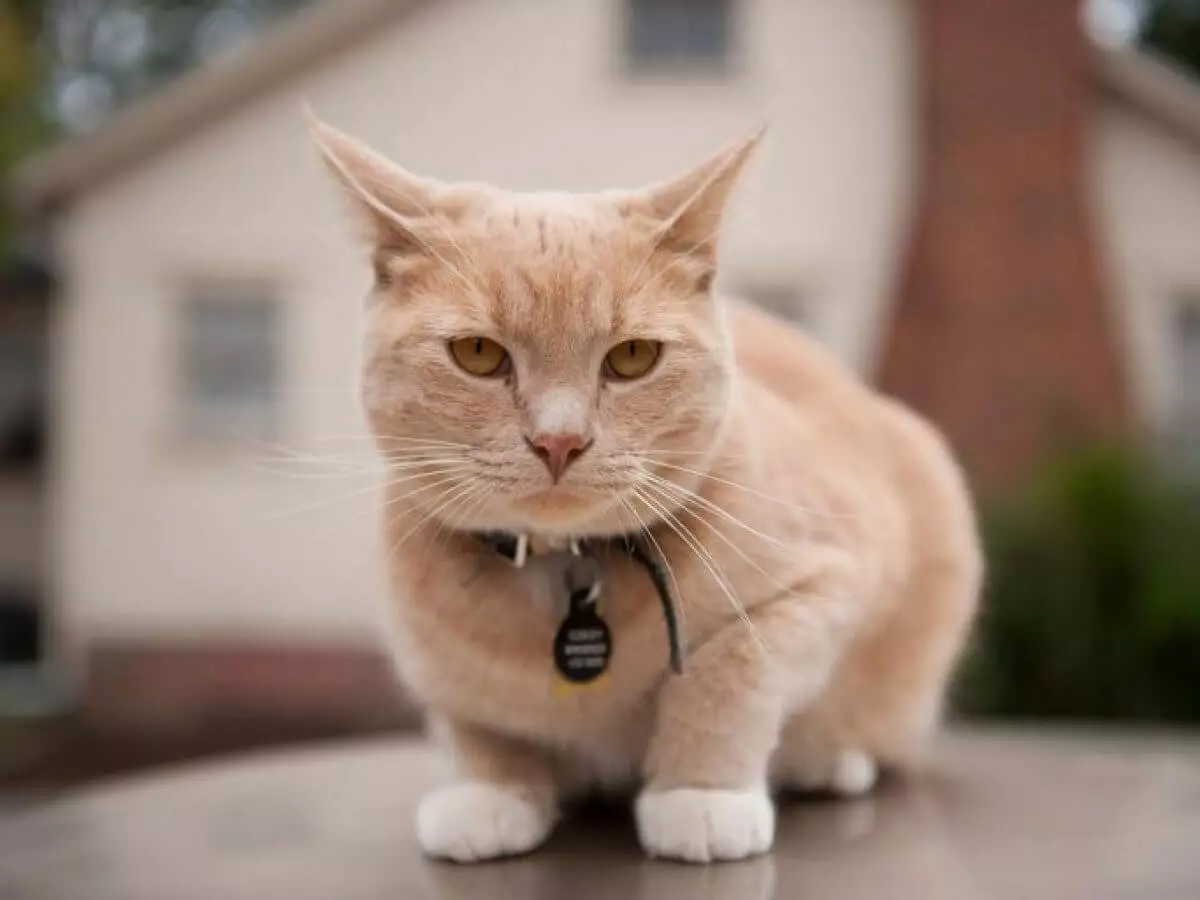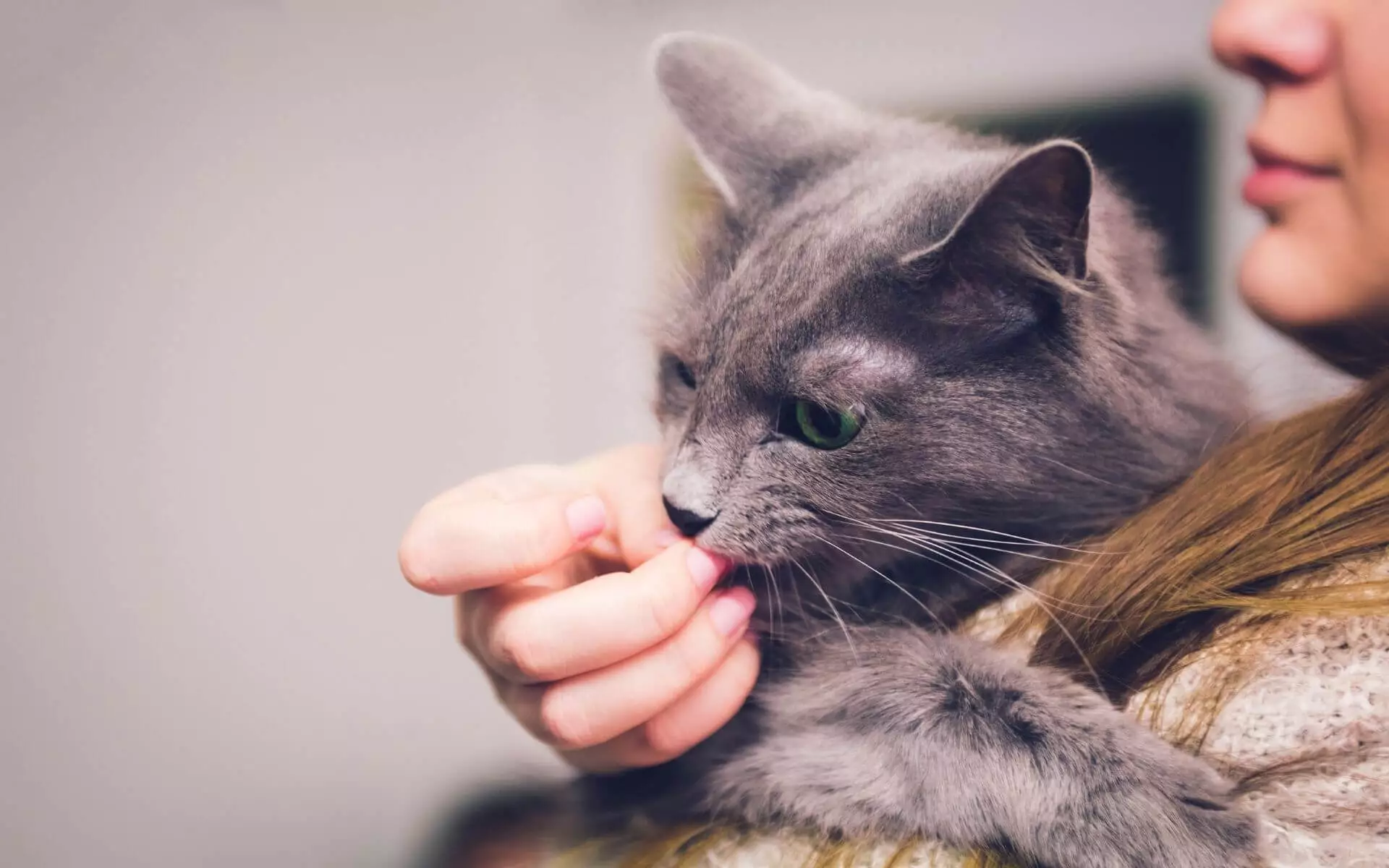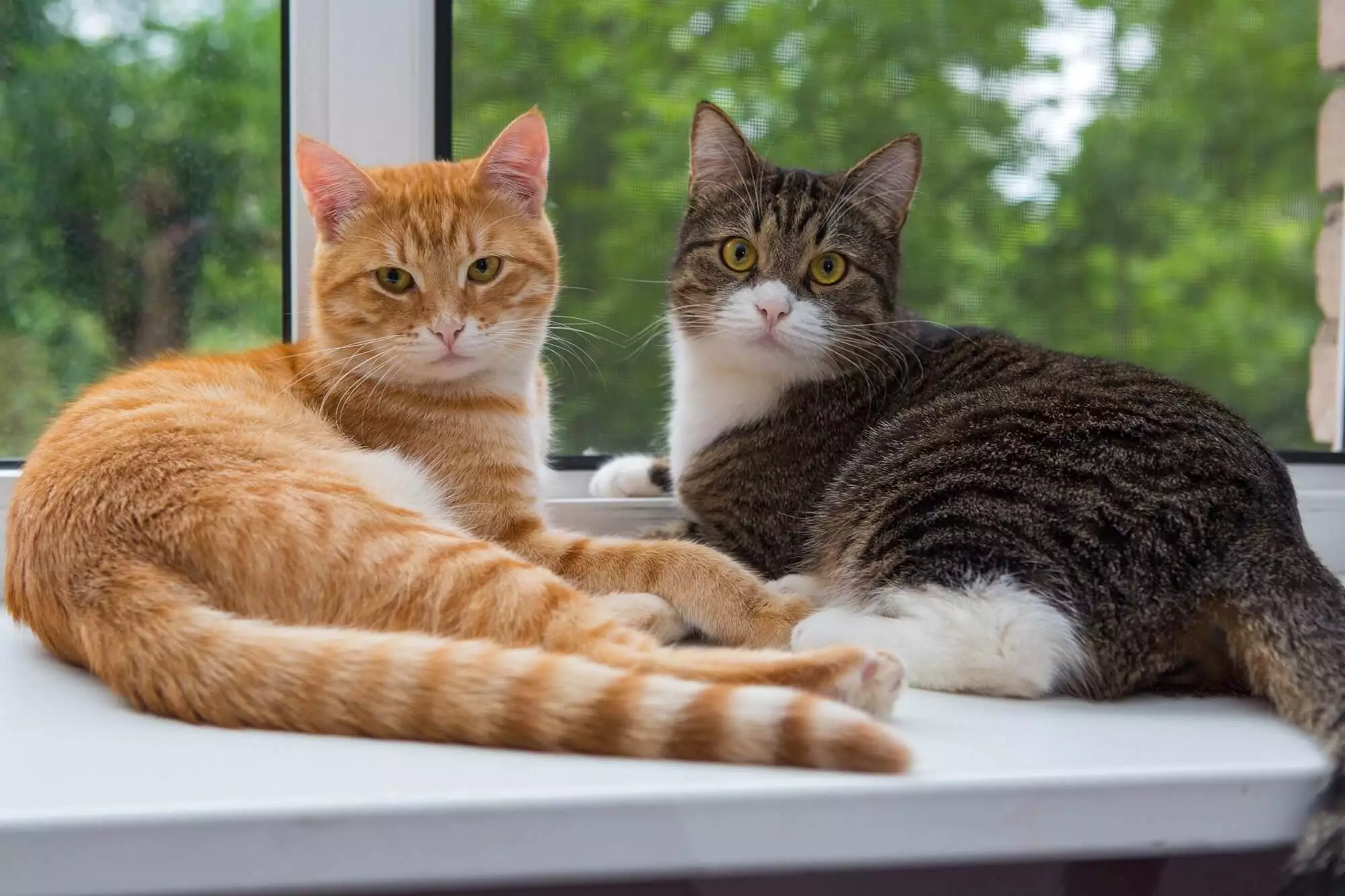If you’ve ever seen a cat with a smoky blend of blue, cream, and gray fur that almost looks painted by an artist, you’ve probably met a Blue Tortoiseshell Cat. This rare and mesmerizing coat color isn’t a breed on its own—it’s a color pattern that can appear in several cat breeds. As a lifelong cat enthusiast and pet blogger, I’ve met only a few blue torties in person, and trust me—they leave a lasting impression.
In this guide, we’ll explore everything about these beautiful cats: their appearance, genetics, personality, lifespan, and care needs, along with a real-life story of one remarkable blue tortoiseshell I met a few years ago.
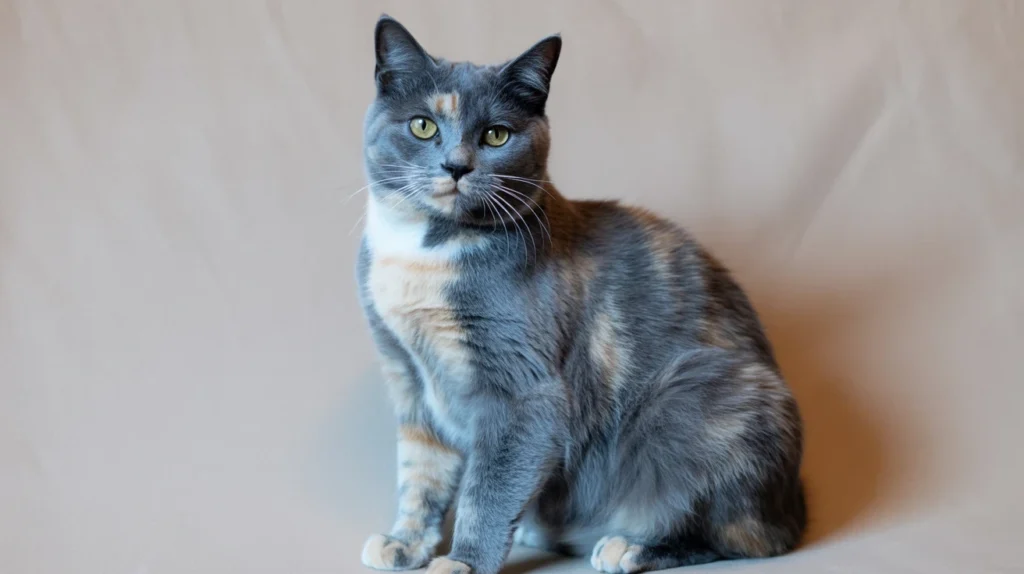
Content
What Is a Blue Tortoiseshell Cat?
The term “blue tortoiseshell” might sound like something from a fantasy novel, but it simply describes a diluted version of the traditional tortoiseshell pattern.
Tortoiseshell cats usually display a striking mix of black, orange, and cream patches. When a cat carries the dilution gene, those intense colors soften into blue-gray and pale cream, giving rise to what’s known as a dilute tortoiseshell or blue tortie.
The result is a gentle, cloud-like coat pattern that looks as though soft watercolor hues were brushed across their fur. These cats can appear in both short-haired and long-haired varieties, depending on their breed.
Blue Tortoiseshell Cat Genetics and Gender
Here’s a fascinating genetic twist: almost all tortoiseshell cats are female.
That’s because the tortoiseshell color pattern depends on genes found on the X chromosome. Since females have two X chromosomes (XX), they can inherit both the orange and black color genes. Males, on the other hand, have only one X and one Y chromosome (XY), making it extremely rare for them to show this mix of colors.
A male blue tortoiseshell cat can exist, but it usually happens only when there’s a genetic anomaly—like an extra X chromosome (XXY). Sadly, these rare males are typically sterile.
So, if you ever come across a male blue tortoiseshell cat, know that you’ve met one of nature’s rarest combinations!
Appearance and Coat Patterns
Every blue tortoiseshell cat is unique. No two cats have the same pattern of colors—some display large patches, while others have a finely blended mosaic of blue and cream. Common coat variations include:
- Blue-cream mix (the classic blue tortie look)
- Blue tortoiseshell with white patches (sometimes called “blue calico”)
- Long-haired blue torties, where the colors appear softer and more diffused
Their eye colors often range from bright gold to green, adding even more contrast to their smoky fur tones.
Compared to solid-colored cats, blue tortoiseshells often appear more visually dynamic, almost as if their coats shimmer under light.
Read More About: Types Of Siamese Cats
Personality and Behavior: Do Blue Torties Have “Tortitude”?
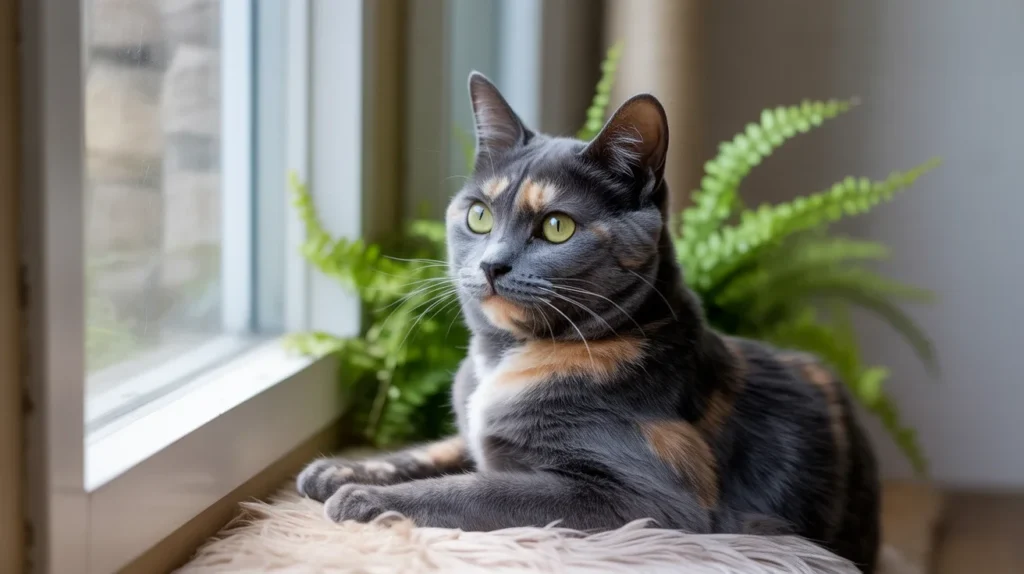
Ask any cat owner about tortoiseshell cats, and you’ll probably hear the word “tortitude.”
This term playfully refers to the bold, confident, and quirky personality often associated with tortoiseshells. While not every blue tortie fits that stereotype, many do show strong-willed, expressive traits.
From my experience and other cat parents’ stories, blue tortoiseshell cats often:
- Form deep bonds with one or two family members
- Love attention but on their own terms
- Display bursts of playfulness, followed by quiet independence
- Communicate vividly through body language and expressive meows
Still, it’s important to remember that personality depends more on individual upbringing than color genetics. Some blue torties are affectionate lap cats, while others are independent observers.
Real-Life Case Study: Misty, the Gentle Blue Tortie
A few years ago, I met Misty, a blue tortoiseshell rescue cat at a local shelter. Her coat looked like a swirl of stormy clouds, with pale cream streaks along her back. Despite being shy at first, she gradually revealed her gentle and intelligent side.
Her foster owner shared that Misty would “talk” softly whenever she wanted food or playtime and always sat by the window at sunset as if watching the world unwind. Misty’s story taught me something every cat lover should know—behind every unique coat lies an equally unique heart.
Stories like Misty’s remind us why blue tortoiseshell cats deserve more recognition than they often get. They may be rare, but their personalities are unforgettable.
Blue Tortoiseshell Cat Health, Lifespan, and Care
When it comes to health, blue tortoiseshell cats are just as healthy as any other cats. Their coat color doesn’t indicate specific genetic diseases. However, as mentioned earlier, rare male torties with the XXY chromosome may face fertility issues or related complications.
Average Lifespan: 12–16 years (depending on breed, diet, and lifestyle)
Care Tips for Blue Tortoiseshell Cats:
- Grooming: Regular brushing helps manage shedding and keeps their coat shiny, especially for long-haired blue torties.
- Diet: Feed high-quality cat food rich in omega fatty acids to maintain coat health and reduce hairballs.
- Exercise & Enrichment: Blue torties are curious and active—interactive toys and scratching posts keep them happy.
- Regular Vet Visits: Annual check-ups are vital for early detection of dental, weight, or thyroid issues.
If you’re caring for a blue tortoiseshell kitten, socialization and gentle handling from an early age can help them grow into confident, affectionate adults.
Blue Tortoiseshell vs. Calico Cats
Many people confuse blue tortoiseshell cats with calico cats, but they’re not the same.
Here’s the key difference:
- Tortoiseshell cats (including blue torties) have a mix of two colors—black (or blue) and orange (or cream)—blended together.
- Calico cats have the same color combination but with distinct white patches separating the patterns.
So, if you see white mixed with the blue and cream tones, your cat is more likely a blue-cream calico rather than a pure blue tortoiseshell.
Myths and Fun Facts
- Not a Breed: The blue tortoiseshell pattern can appear in several breeds—like the British Shorthair, Persian, or Maine Coon.
- “Blue” Means Gray: The color “blue” in cat terminology refers to a diluted gray tone, not actual blue fur.
- Each One Is Unique: Like human fingerprints, no two torties share the same coat pattern.
- Tortitude Isn’t a Rule: Some blue tortoiseshell cats are calm, affectionate sweethearts!
Final Thoughts
The blue tortoiseshell cat is a true masterpiece of nature—a soft, watercolor version of the vibrant tortie we all know and love. Their coats may be rare, but their charm, intelligence, and individuality make them unforgettable companions.
Whether you already share your home with a blue tortie or are considering adopting one, remember: every patch of color tells a story, and every cat writes its own chapter in your life.
If you love charming and affectionate pets, you’ll also enjoy learning about the Shih Tzu Dog and its adorable personality.
FAQs
Are blue torties rare?
Yes, blue tortoiseshell cats are rare because the dilution gene that creates their blue-gray and cream coat isn’t common in all breeds.
How much does a blue tortoiseshell cat cost?
A blue tortoiseshell cat typically costs between $300 and $800, depending on breed, pedigree, and coat quality.
What are the rare tortie cat colors?
Rare tortie colors include blue tortoiseshell, chocolate tortie, and lilac tortie, each created by unique genetic combinations.
What does a blue tortie cat look like?
A blue tortie cat has a soft mix of blue-gray and cream patches, giving it a cloudy, pastel-like coat pattern that looks hand-painted.

Meet Max, the dog’s best friend. He’s a pup-loving pro, sharing tips on training, grooming, and adventures with our four-legged companions.

